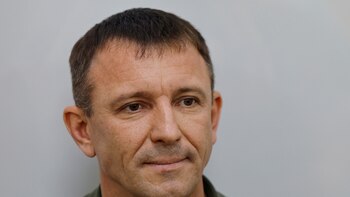
The construction of the Olympic and Paralympic Village for the Paris 2024 Games continues amidst the controversy that the rooms will not have air conditioning and the organization made their position clear: there will be no turning back.
“I can assure you that we are not going to change course and that the construction plan in La Villa will not be modified with respect to air conditioning,” said Anne Hidalgo, the mayor of the French capital.
Paris committed itself to caring for the environment when it applied to organize the Games and the project chosen for the Olympic and Paralympic Village aims to reduce its carbon footprint by 45%. “I want the Games to be an example from an environmental point of view,” Hidalgo said.
The temperature last summer in Paris reached 40 degrees for several consecutive days and, logically, the health of athletes is an issue that generated concern. “We are building rooms where there will be six degrees lower than the outside temperature. It’s a question of society. We must collectively accept that we have six degrees lower and an excellent carbon balance or we say no and lower the carbon balance,” Nicolas Ferrand, the general director of Solideo, the company in charge of the works, had explained in the midst of the controversy.

Beyond the use of environmentally friendly materials to lower the temperature inside the rooms compared to the outside, the organization thought of alternatives and began testing a new underground cooling system, which was already used last year in the Louvre Museum.
The objective of this geothermal energy system is to ensure that in the rooms the temperature does not exceed 26 degrees at night, that this climate can be maintained during the day with some basic rules and Laurent Michaud, the director of the Villa, confirmed that the tests that were carried out were satisfactory.
The simulation was carried out in the highest rooms that were most exposed to the sun, at the same time that the wind and water temperature in the Seine River were also taken into account. “Although outdoor temperatures reached 41° degrees, we had temperatures of 28 degrees in most of these rooms. In others, of course, we recorded more casualties,” Michaud told The Associated Press.

Laurent Monnet, in charge of the ecological transition in Saint-Denis, where the Olympic and Paralympic Village will be located, also assured that the rooms will be six degrees lower and sent a message to the athletes: “We need athletes to set an example when using the buildings. We can build the most virtuous Villa we want, but the use of it is what will mark our carbon footprint.”
The decision not to use air conditioning was not the only thing that generated controversy, but it also opened a debate regarding the possibility for the delegations to have their own cooling systems.
“It will be on a case-by-case basis and the health and well-being of athletes,” Michaud said, explaining that fans with water vaporizers could be used instead of traditional devices; Hidalgo, the mayor of Paris, categorically opposed any additional mechanism: “We have to be consistent with our objectives. I am against it.”

The Olympic and Paralympic Village of the Paris Games stands on the banks of the River Seine, in Saint Denis. The 50-hectare complex awaits, between Olympic and Paralympic athletes, to host more than 25 thousand people.
Once the Olympic and Paralympic Games are over in the French capital, the buildings will be used for residential and commercial use.
Últimas Noticias
Sinner-Alcaraz, the duel that came to succeed the three phenomenons
Beyond the final result, Roland Garros left the feeling that the Italian and the Spaniard will shape the great duel that came to help us through the duel for the end of the Federer-Nadal-Djokovic era.
Table tennis: Brazil’s Bruna Costa Alexandre will be Olympic and Paralympic in Paris 2024
She is the third in her sport and the seventh athlete to achieve it in the same edition; in Santiago 2023 she was the first athlete with disabilities to compete at the Pan American level and won a medal.

Rugby 7s: the best player of 2023 would only play the medal match in Paris
Argentinian Rodrigo Isgró received a five-game suspension for an indiscipline in the circuit’s decisive clash that would exclude him until the final or the bronze match; the Federation will seek to make the appeal successful.

Rhonex Kipruto, owner of the world record for the 10000 meters on the road, was suspended for six years
The Kenyan received the maximum sanction for irregularities in his biological passport and the Court considered that he was part of a system of “deliberate and sophisticated doping” to improve his performance. He will lose his record and the bronze medal at the Doha World Cup.

Katie Ledecky spoke about doping Chinese swimmers: “It’s difficult to go to Paris knowing that we’re going to compete with some of these athletes”
The American, a seven-time Olympic champion, referred to the case of the 23 positive controls before the Tokyo Games that were announced a few weeks ago and shook the swimming world. “I think our faith in some of the systems is at an all-time low,” he said.




